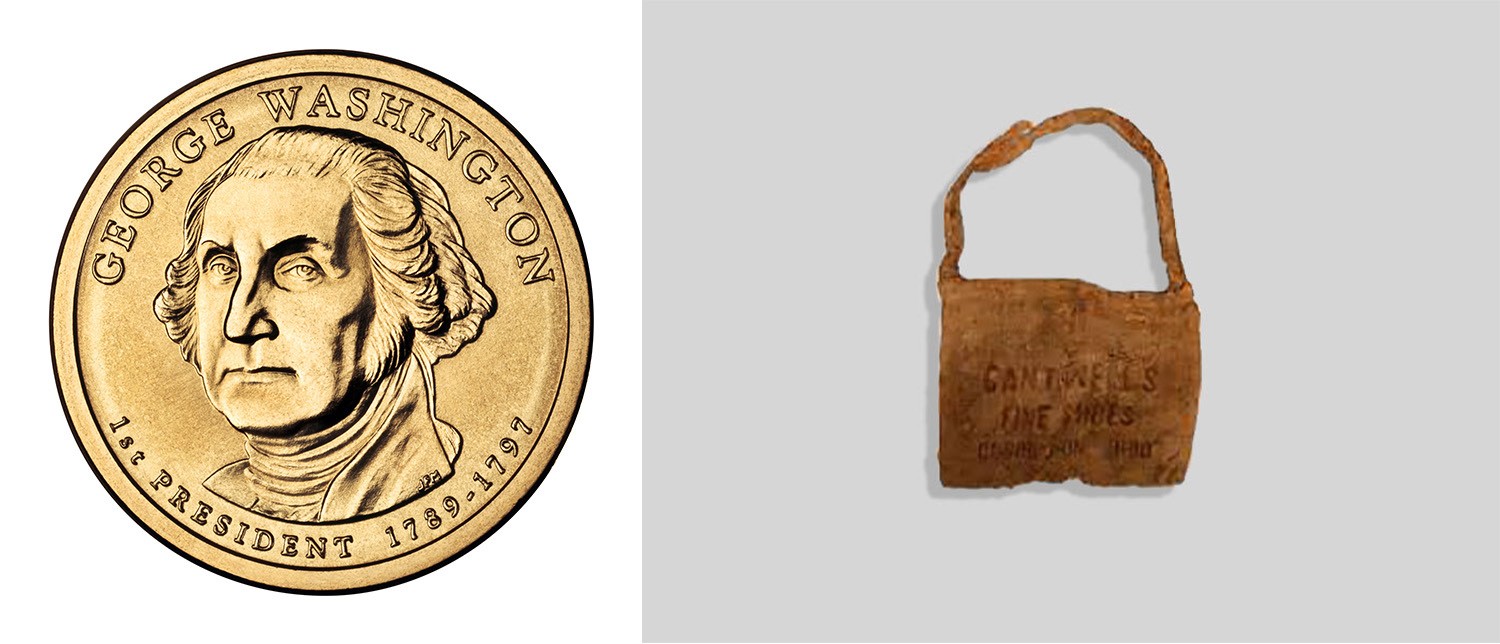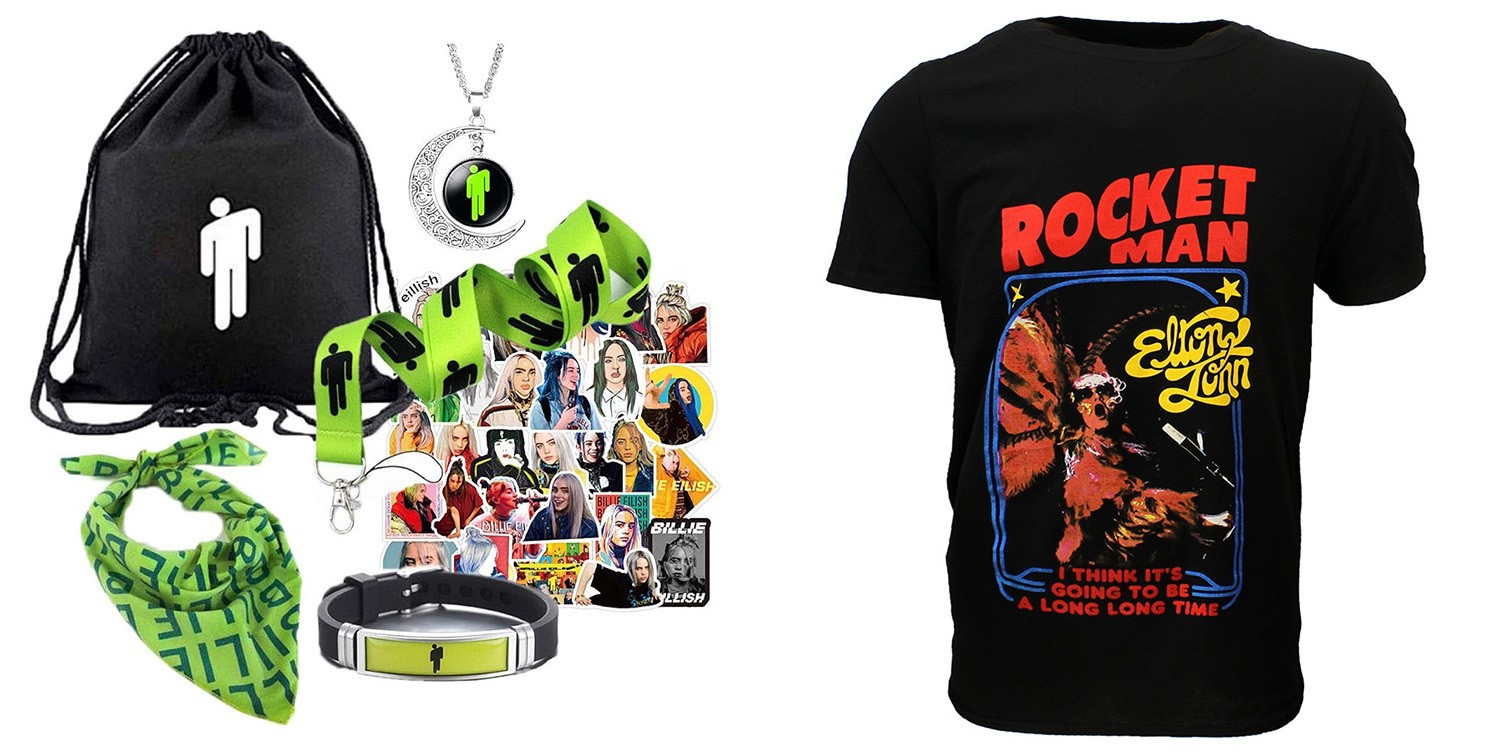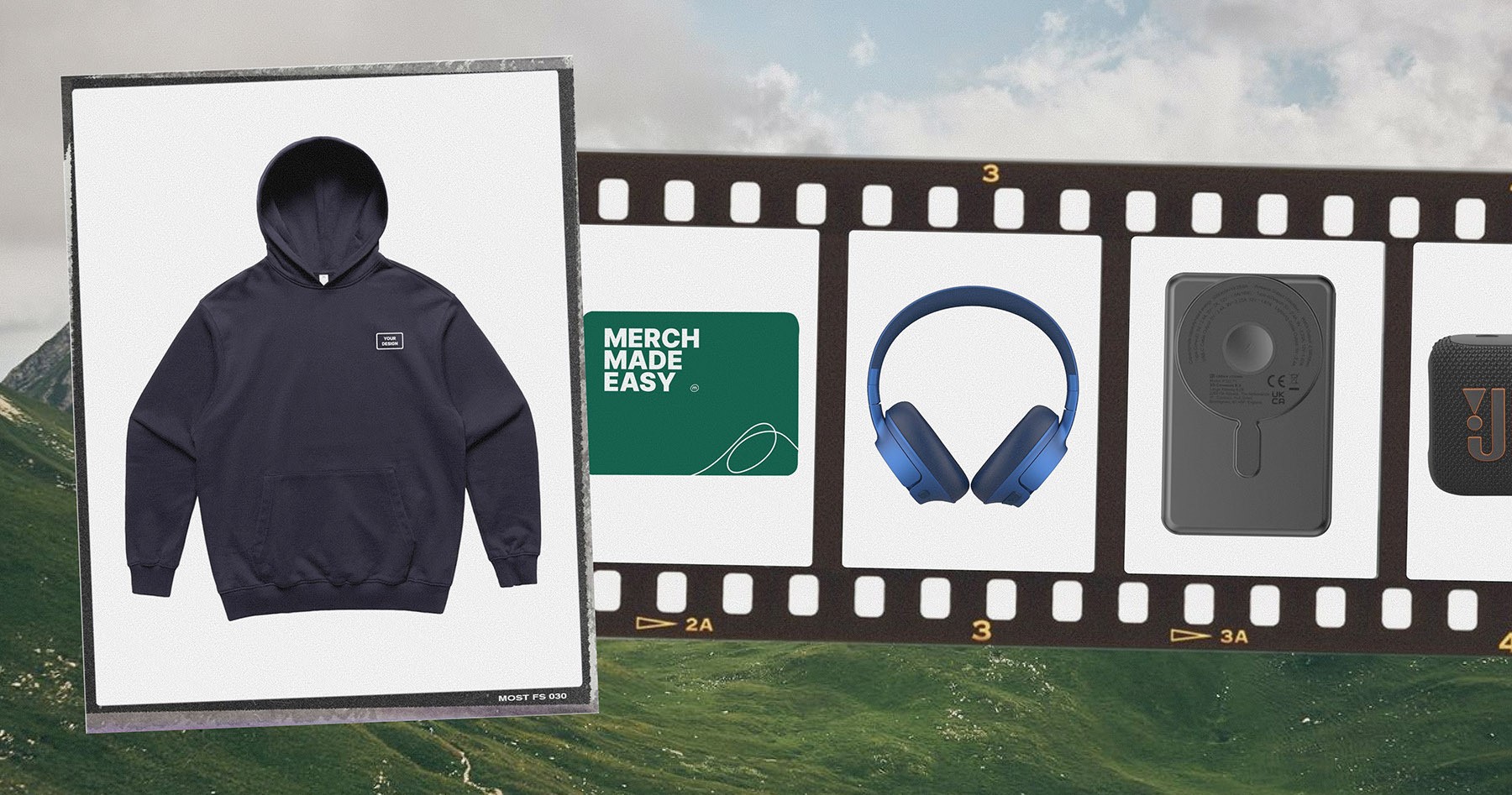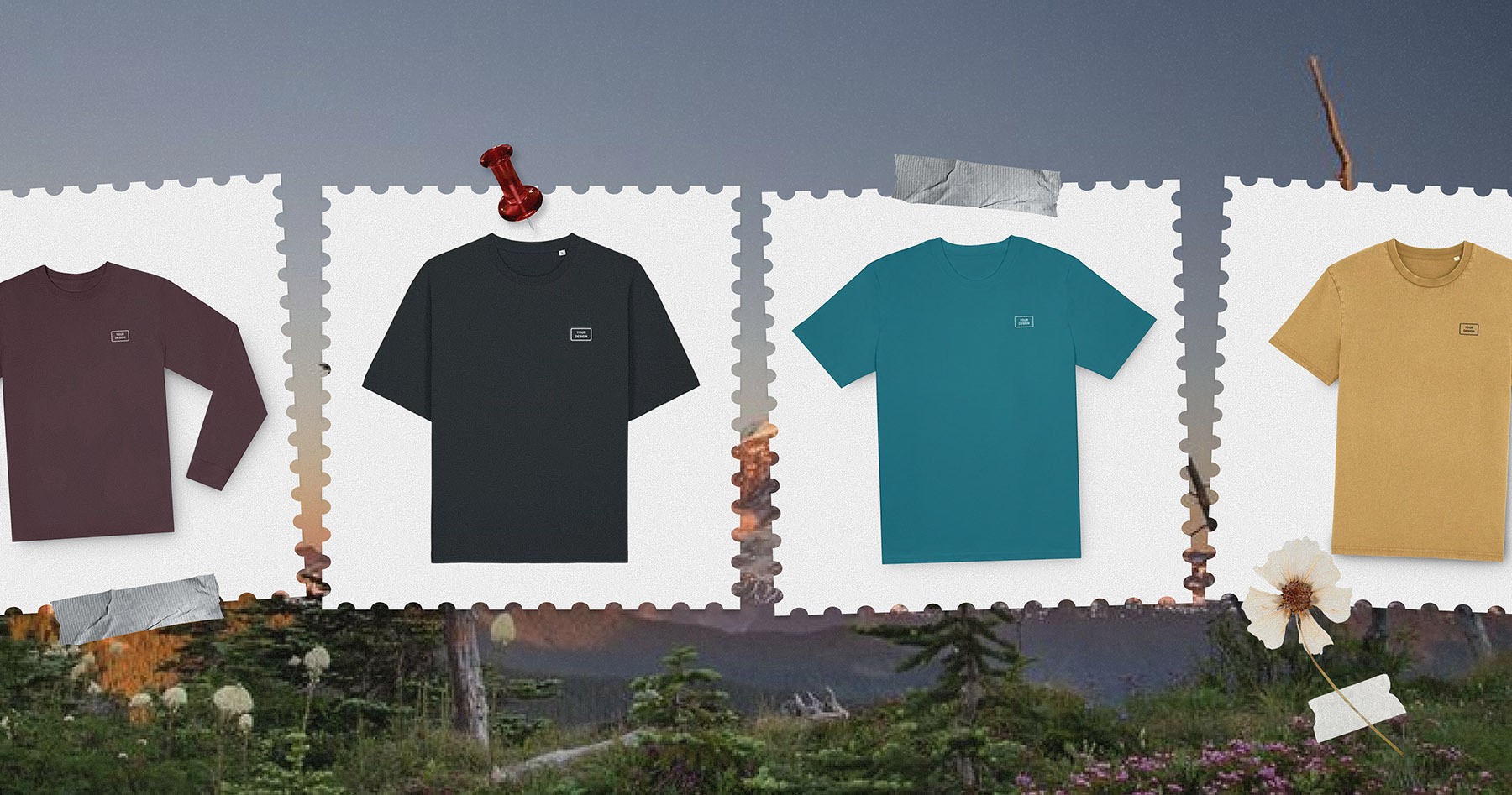The Evolution of Swag: From George Washington to Modern-Day Fandom
The Evolution of Swag: From George Washington to Modern-Day Fandom
The Evolution of Swag: From George Washington to Modern-Day Fandom
Aug 5, 2024
4
Min Read



From George Washington’s commemorative coins to Star Wars action figures, swag has always been a big deal. This article explores the evolution of swag, revealing how it transformed from simple keepsakes to iconic pieces of pop culture. Discover the key moments and innovators who turned everyday items into must-have symbols of fandom and style. Dive into the rich history of swag and see how it shapes our world today.
Early Pioneers: The Foundations of Swag
Swag, a ubiquitous presence in today's world, has roots tracing back to the 18th century. The concept of promoting brands or individuals through products began with some surprising figures. One of the earliest pioneers was George Washington, who, in the late 18th century, utilized memorabilia such as commemorative coins and medallions featuring his likeness. These items were designed to inspire patriotism and strengthen national identity, establishing Washington as an iconic figure through what we now recognize as early promotional products.
In the 19th century, Jasper Freemont Meek revolutionized the concept of promotional products. In 1878, Meek, a printer by trade, devised an innovative solution to keep his newspaper printing business active between issues. He began producing branded burlap book bags by partnering with a local shoe store, printing their brand name on the bags. These branded bags quickly became popular, with school children in the town carrying them everywhere. This initiative not only promoted the shoe store but also marked the birth of branded swag.

The Artistic Influence: Raymond Molinier and the Paris Opera
The early 20th century saw further innovation in swag with Raymond Molinier, a French artist and designer. In the 1930s, Molinier transformed ordinary show programs at the Paris Opera into vibrant collectibles, complete with stunning illustrations and intricate designs. These programs became cherished mementos for Opera-goers, adding an artistic dimension to the concept of swag.
Post-War Boom: Walt Disney and the Rise of Entertainment Merchandising
The post-World War II era marked a significant expansion in the swag industry, driven by the burgeoning media and entertainment sectors. Walt Disney, the mastermind behind Mickey Mouse and Disneyland, understood the power of imagination and consumer desire. With the opening of Disneyland in 1955, Disney capitalized on the growing demand for memorabilia, offering everything from plush toys to princess dresses. This era cemented the role of swag as a crucial aspect of brand and entertainment culture.

George Lucas and the Star Wars Phenomenon
The 1970s introduced another monumental figure in swag history: George Lucas. With the release of "Star Wars," Lucas retained the rights to the film's swag, a decision that proved immensely lucrative. The franchise's lightsabers, action figures, and apparel became beloved staples, demonstrating the immense potential of cinema-related swag. This strategic move by Lucas not only boosted the franchise's popularity but also set new standards for swag in the entertainment industry.
The Modern Era: From Band Merch to TV Show Apparel
The evolution of swag continued into the late 20th and early 21st centuries with the rise of band swag. Iconic artists like Queen, ABBA, and Elton John pioneered the concept of concert swag, transforming it into a significant revenue stream. This trend persisted, with modern artists like Kanye West and Billie Eilish continuing to capitalize on swag sales.
Television shows also joined the swag revolution. The 1990s and 2000s saw a surge in branded apparel and drinkware from popular shows like "Friends," which became conversation starters and expressions of fandom. This period also witnessed increased creativity in workplace uniforms and promotional products, further embedding swag into everyday life.

Swag as a Tool for Employee Happiness
In modern times, swag has evolved beyond mere promotional items and pop culture memorabilia. Companies now recognize the power of branded swag in enhancing employee happiness and engagement. By incorporating swag into employee onboarding, companies can foster a sense of belonging and pride from the very start. For instance, a welcome pack containing branded items such as notebooks, water bottles, hoodies, and tech accessories can make new hires feel valued and part of the team.
Furthermore, regular distribution of thoughtful swag, such as anniversary gifts or holiday packages, can boost morale and demonstrate appreciation for employees' hard work. Custom swag can also be used as rewards for outstanding performance, motivating employees to strive for excellence. By investing in quality swag, companies not only enhance their brand visibility but also create a positive and engaging workplace culture.
Conclusion
From George Washington’s commemorative items to Jasper Freemont Meek’s branded tote bags, and from Raymond Molinier’s artistic programs to Walt Disney’s imaginative products, the history of swag is rich with innovation and creativity. Today, swag is more than just a marketing tool; it represents a connection to brands, characters, and stories that resonate deeply with consumers. The legacy of these pioneering figures continues to shape the swag landscape, making everyday items a testament to the power of branding and imagination.
From George Washington’s commemorative coins to Star Wars action figures, swag has always been a big deal. This article explores the evolution of swag, revealing how it transformed from simple keepsakes to iconic pieces of pop culture. Discover the key moments and innovators who turned everyday items into must-have symbols of fandom and style. Dive into the rich history of swag and see how it shapes our world today.
Early Pioneers: The Foundations of Swag
Swag, a ubiquitous presence in today's world, has roots tracing back to the 18th century. The concept of promoting brands or individuals through products began with some surprising figures. One of the earliest pioneers was George Washington, who, in the late 18th century, utilized memorabilia such as commemorative coins and medallions featuring his likeness. These items were designed to inspire patriotism and strengthen national identity, establishing Washington as an iconic figure through what we now recognize as early promotional products.
In the 19th century, Jasper Freemont Meek revolutionized the concept of promotional products. In 1878, Meek, a printer by trade, devised an innovative solution to keep his newspaper printing business active between issues. He began producing branded burlap book bags by partnering with a local shoe store, printing their brand name on the bags. These branded bags quickly became popular, with school children in the town carrying them everywhere. This initiative not only promoted the shoe store but also marked the birth of branded swag.

The Artistic Influence: Raymond Molinier and the Paris Opera
The early 20th century saw further innovation in swag with Raymond Molinier, a French artist and designer. In the 1930s, Molinier transformed ordinary show programs at the Paris Opera into vibrant collectibles, complete with stunning illustrations and intricate designs. These programs became cherished mementos for Opera-goers, adding an artistic dimension to the concept of swag.
Post-War Boom: Walt Disney and the Rise of Entertainment Merchandising
The post-World War II era marked a significant expansion in the swag industry, driven by the burgeoning media and entertainment sectors. Walt Disney, the mastermind behind Mickey Mouse and Disneyland, understood the power of imagination and consumer desire. With the opening of Disneyland in 1955, Disney capitalized on the growing demand for memorabilia, offering everything from plush toys to princess dresses. This era cemented the role of swag as a crucial aspect of brand and entertainment culture.

George Lucas and the Star Wars Phenomenon
The 1970s introduced another monumental figure in swag history: George Lucas. With the release of "Star Wars," Lucas retained the rights to the film's swag, a decision that proved immensely lucrative. The franchise's lightsabers, action figures, and apparel became beloved staples, demonstrating the immense potential of cinema-related swag. This strategic move by Lucas not only boosted the franchise's popularity but also set new standards for swag in the entertainment industry.
The Modern Era: From Band Merch to TV Show Apparel
The evolution of swag continued into the late 20th and early 21st centuries with the rise of band swag. Iconic artists like Queen, ABBA, and Elton John pioneered the concept of concert swag, transforming it into a significant revenue stream. This trend persisted, with modern artists like Kanye West and Billie Eilish continuing to capitalize on swag sales.
Television shows also joined the swag revolution. The 1990s and 2000s saw a surge in branded apparel and drinkware from popular shows like "Friends," which became conversation starters and expressions of fandom. This period also witnessed increased creativity in workplace uniforms and promotional products, further embedding swag into everyday life.

Swag as a Tool for Employee Happiness
In modern times, swag has evolved beyond mere promotional items and pop culture memorabilia. Companies now recognize the power of branded swag in enhancing employee happiness and engagement. By incorporating swag into employee onboarding, companies can foster a sense of belonging and pride from the very start. For instance, a welcome pack containing branded items such as notebooks, water bottles, hoodies, and tech accessories can make new hires feel valued and part of the team.
Furthermore, regular distribution of thoughtful swag, such as anniversary gifts or holiday packages, can boost morale and demonstrate appreciation for employees' hard work. Custom swag can also be used as rewards for outstanding performance, motivating employees to strive for excellence. By investing in quality swag, companies not only enhance their brand visibility but also create a positive and engaging workplace culture.
Conclusion
From George Washington’s commemorative items to Jasper Freemont Meek’s branded tote bags, and from Raymond Molinier’s artistic programs to Walt Disney’s imaginative products, the history of swag is rich with innovation and creativity. Today, swag is more than just a marketing tool; it represents a connection to brands, characters, and stories that resonate deeply with consumers. The legacy of these pioneering figures continues to shape the swag landscape, making everyday items a testament to the power of branding and imagination.
From George Washington’s commemorative coins to Star Wars action figures, swag has always been a big deal. This article explores the evolution of swag, revealing how it transformed from simple keepsakes to iconic pieces of pop culture. Discover the key moments and innovators who turned everyday items into must-have symbols of fandom and style. Dive into the rich history of swag and see how it shapes our world today.
Early Pioneers: The Foundations of Swag
Swag, a ubiquitous presence in today's world, has roots tracing back to the 18th century. The concept of promoting brands or individuals through products began with some surprising figures. One of the earliest pioneers was George Washington, who, in the late 18th century, utilized memorabilia such as commemorative coins and medallions featuring his likeness. These items were designed to inspire patriotism and strengthen national identity, establishing Washington as an iconic figure through what we now recognize as early promotional products.
In the 19th century, Jasper Freemont Meek revolutionized the concept of promotional products. In 1878, Meek, a printer by trade, devised an innovative solution to keep his newspaper printing business active between issues. He began producing branded burlap book bags by partnering with a local shoe store, printing their brand name on the bags. These branded bags quickly became popular, with school children in the town carrying them everywhere. This initiative not only promoted the shoe store but also marked the birth of branded swag.

The Artistic Influence: Raymond Molinier and the Paris Opera
The early 20th century saw further innovation in swag with Raymond Molinier, a French artist and designer. In the 1930s, Molinier transformed ordinary show programs at the Paris Opera into vibrant collectibles, complete with stunning illustrations and intricate designs. These programs became cherished mementos for Opera-goers, adding an artistic dimension to the concept of swag.
Post-War Boom: Walt Disney and the Rise of Entertainment Merchandising
The post-World War II era marked a significant expansion in the swag industry, driven by the burgeoning media and entertainment sectors. Walt Disney, the mastermind behind Mickey Mouse and Disneyland, understood the power of imagination and consumer desire. With the opening of Disneyland in 1955, Disney capitalized on the growing demand for memorabilia, offering everything from plush toys to princess dresses. This era cemented the role of swag as a crucial aspect of brand and entertainment culture.

George Lucas and the Star Wars Phenomenon
The 1970s introduced another monumental figure in swag history: George Lucas. With the release of "Star Wars," Lucas retained the rights to the film's swag, a decision that proved immensely lucrative. The franchise's lightsabers, action figures, and apparel became beloved staples, demonstrating the immense potential of cinema-related swag. This strategic move by Lucas not only boosted the franchise's popularity but also set new standards for swag in the entertainment industry.
The Modern Era: From Band Merch to TV Show Apparel
The evolution of swag continued into the late 20th and early 21st centuries with the rise of band swag. Iconic artists like Queen, ABBA, and Elton John pioneered the concept of concert swag, transforming it into a significant revenue stream. This trend persisted, with modern artists like Kanye West and Billie Eilish continuing to capitalize on swag sales.
Television shows also joined the swag revolution. The 1990s and 2000s saw a surge in branded apparel and drinkware from popular shows like "Friends," which became conversation starters and expressions of fandom. This period also witnessed increased creativity in workplace uniforms and promotional products, further embedding swag into everyday life.

Swag as a Tool for Employee Happiness
In modern times, swag has evolved beyond mere promotional items and pop culture memorabilia. Companies now recognize the power of branded swag in enhancing employee happiness and engagement. By incorporating swag into employee onboarding, companies can foster a sense of belonging and pride from the very start. For instance, a welcome pack containing branded items such as notebooks, water bottles, hoodies, and tech accessories can make new hires feel valued and part of the team.
Furthermore, regular distribution of thoughtful swag, such as anniversary gifts or holiday packages, can boost morale and demonstrate appreciation for employees' hard work. Custom swag can also be used as rewards for outstanding performance, motivating employees to strive for excellence. By investing in quality swag, companies not only enhance their brand visibility but also create a positive and engaging workplace culture.
Conclusion
From George Washington’s commemorative items to Jasper Freemont Meek’s branded tote bags, and from Raymond Molinier’s artistic programs to Walt Disney’s imaginative products, the history of swag is rich with innovation and creativity. Today, swag is more than just a marketing tool; it represents a connection to brands, characters, and stories that resonate deeply with consumers. The legacy of these pioneering figures continues to shape the swag landscape, making everyday items a testament to the power of branding and imagination.
Table of Contents
Stay up to date
Stay up to date
Stay up to date
More Articles
More Articles
Read more about how to effectively use company swag or swag packs for your business.


